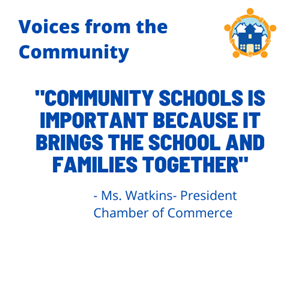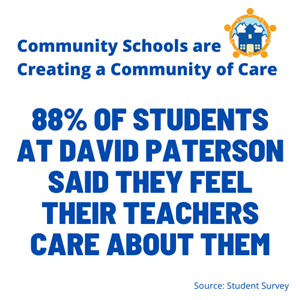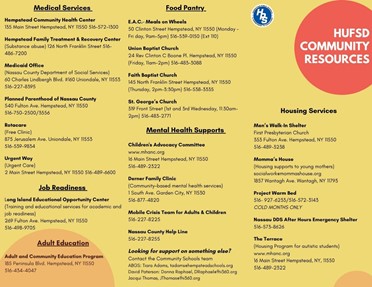- Hempstead Union Free School District
- Community Schools
Community
Page Navigation
-
Welcome to the Community pages of our website. Hempstead Union Free School District is dedicated to engaging with our community. When families, communities, and schools work together, students are more successful and the entire community benefits.
What is a Community School?
Community Schools support:
-
the whole child, the child’s family, and learning both inside and outside of the classroom
Every community school partnership shapes its programs and services to the needs of its own
community and students, but all models share many basic elements. Among the most prominent are:- Focus on Education
- Continuous Support Along the Pathway to Productive Adulthood
- School, Family and Community Engagement
- Extended Hours and Expanded Learning Opportunities
- Wellness
- Partnerships
- Whole School Transformation
Through their attention to school climate and to the school as a wellness environment, and through
what one prominent researcher calls “new institutional arrangements,” community schools become
more than the sum of their programmatic parts. While, compared to traditional schools, community
schools do indeed offer a wide array of programs for students and their families, the real hallmark of a
community school is the transformational effect of all the ingredients as they interact with one another,
every day. To learn more: Key Elements of a Community School -
Partnership for the Future of Learning Community Schools video
-
We are committed to connecting our families with important community resources. Our Community Schools Resource Guide contains a myriad of resources across the district
The Community Schools Resource Guide includes resources in,
- Adult Education, Medical Services, Job Readiness, Mental Health Services, Food Pantry, and Housing Services
Looking for support on something else? Contact the Community Schools team:
- ABGS: Tiara Adams, tadams@hempsteadschools.org
- David Paterson: Donna Raphael, DRaphael@fhi360.org
- Jacqui Thomas, JThomas@fhi360.org
We have an additional food pantry guide.
In addition to our Community Schools Resource Guide, we have a Primary Resource Spreadsheet that documents all of our resources. For access to this document connect with the Community Schools team listed above.
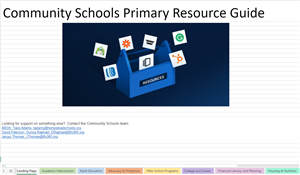
-
Community Schools Pillars
Click each image to find out more about that Community School pillar.
-
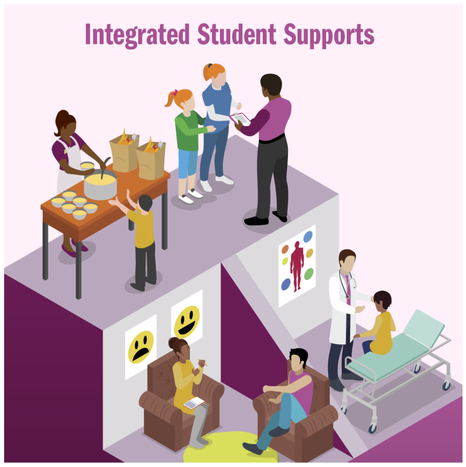
Integrated Student Supports
The first of the four pillars is Integrated Student Supports. Students cannot focus on academics until their non-academic needs are met. Community School staff work with the students and their families to identify the barriers to those needs, then bring in community partners to address and break through the barriers. Having services offered within the schools improves attendance, academic achievement, behavior, and overall well-being.
-

Expanded and Enriched Learning Time and Opportunity
The second pillar is Expanded and Enriched Learning Time and Opportunity. Young people who come from under-resourced communities have limited access to activities outside of school, which widens the achievement gap. Community Schools provide programming where young people are able to build social, emotional, physical, and academic skills through hands-on learning. This programming improves student attendance and behavior, raises graduation rates, and reduces juvenile crime involvement.
-
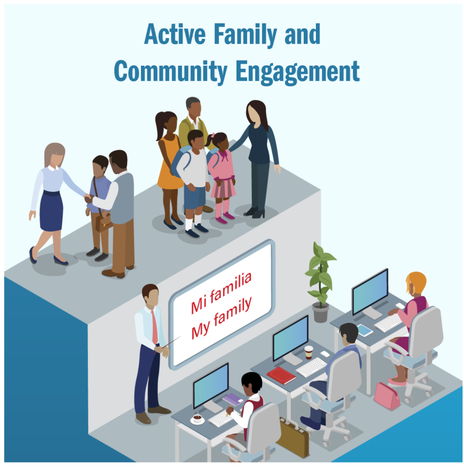
Active Family and Community Engagement
The third pillar is Active Family and Community Engagement. Parents, grandparents, siblings, neighbors, and other community friends are all important pieces to the school puzzle. Full-Service Community Schools function as neighborhood hubs that bring all of those people together to increase student support. They work as a team to create goals and strategies, monitor student progress, and identify and navigate barriers to success. Informed and included families are better equipped to help their kids outside of school, and it is proven that students have higher attendance rates and increased academic achievement when their guardians are involved in their education.
-
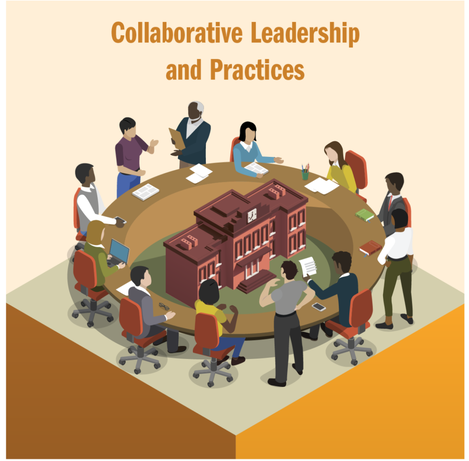
Collaborative Leadership and Practices
The fourth and final pillar is Collaborative Leadership and Practices. Everyone is on the same team and has the same goals: student success. Parents/caregivers, teachers, principals, and community partners are all committed to their students’ academic (and non-academic) achievement. Together, they create and maintain an inclusive, trusting environment based on local cultures and needs, then collaborate during planning and implementation of services. When people from different backgrounds come together, their individual expertise morph together into a collaborative masterpiece. Without collaborative leadership, the other three pillars would fall apart.
-
Our Community Schools are: David Paterson Elementary School | Alverta B. Gray Schultz Middle School | Hempstead High School
What are the ABC's of early warning indicators?
-
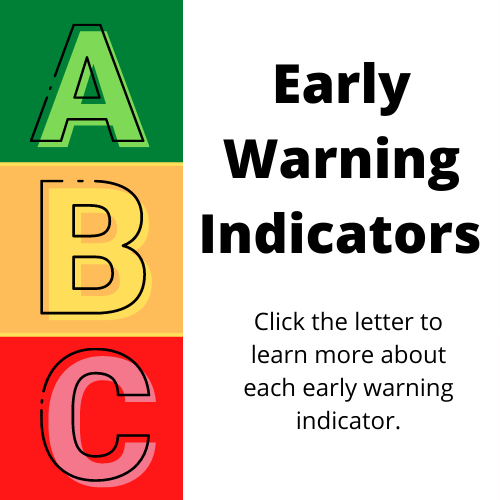
The Indicators
There are 3 key early warning indicators.
To Read more A Practitioner’s Guide to Implementing Early Warning Systems
-
Attendance
Most students who do not regularly attend class fall behind in their coursework and consequently see their grades suffer.
To Read more A Practitioner’s Guide to Implementing Early Warning Systems
-
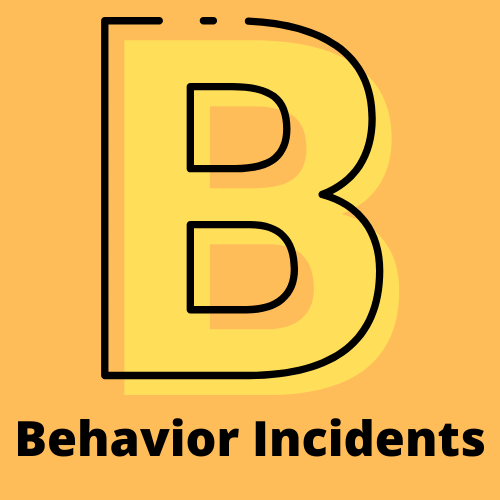
Behavior Incidents
Behavior incidents can indicate that a student is disengaged with the school environment.
To Read more A Practitioner’s Guide to Implementing Early Warning Systems
-
Course Performance
The number of course failures and overall grade point average correlate with a student's probability of graduating in 4 years.
To Read more A Practitioner’s Guide to Implementing Early Warning Systems
-
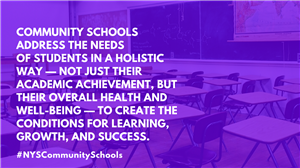
Each Community School (CS) is partnered with a lead CBO partner that provides additional supports and services for students, both integrated into the instructional school day, as well as before and after school. The CS partner to HUFSD is FHI 360.

